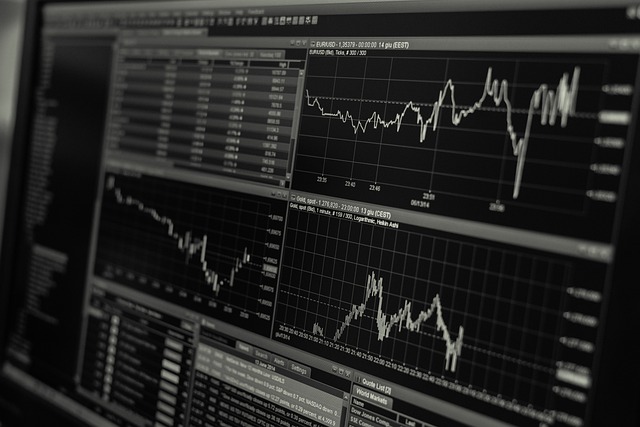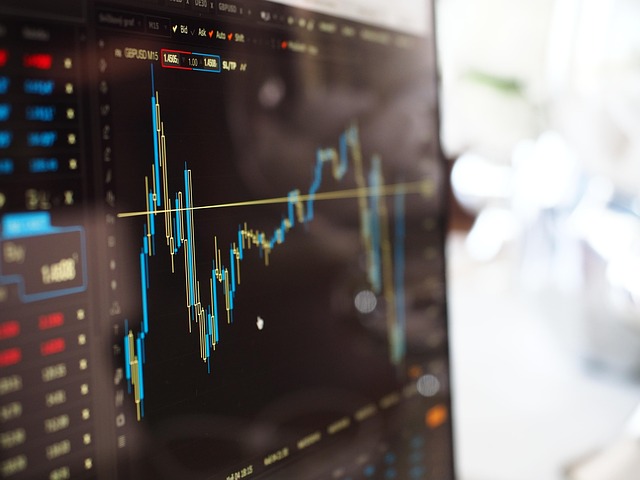The financial landscape of 2025 is a dynamic, data-saturated arena where speed, precision, and strategic foresight are the ultimate currencies. To navigate the volatile yet opportunity-rich markets of Forex, Gold, and Cryptocurrency, a profound shift is underway, moving beyond traditional analysis. This evolution is powered by Algorithmic Trading and sophisticated AI Tools, which are fundamentally rewriting the rules of engagement. These technologies are not merely automating executions; they are revolutionizing core strategies by deploying advanced Machine Learning for predictive insights, enabling disciplined Risk Management across all hours, and uncovering complex correlations between traditional currencies, precious metals, and emergent digital assets, creating a new paradigm for the modern trader.
5. The cross-asset algorithms discussed in Cluster 5 are built upon the principles and data streams detailed in Clusters 2, 3, and 4

Of course. Here is the detailed content for the specified section, adhering to your requirements.
5. The Cross-Asset Algorithms Discussed in Cluster 5 Are Built Upon the Principles and Data Streams Detailed in Clusters 2, 3, and 4
The evolution of Algorithmic Trading is reaching a new zenith with the development of sophisticated cross-asset strategies. The algorithms that form the core of Cluster 5 do not operate in a vacuum; they are the sophisticated synthesis of foundational principles and multi-faceted data streams established in the preceding clusters. This integration represents a paradigm shift from isolated, single-asset strategies to a holistic, macro-driven approach that capitalizes on the deep interconnections between Forex, gold, and cryptocurrency markets. In essence, Cluster 5 is the executive brain that leverages the specialized sensory inputs and processing units of Clusters 2, 3, and 4 to execute complex, multi-dimensional trading decisions.
Foundational Principles: The Architectural Blueprint from Clusters 2, 3, and 4
The principles derived from the earlier clusters provide the core architectural logic for Cluster 5’s cross-asset algorithms.
From Cluster 2 (Forex & Macro-Economic Drivers): Cluster 5 inherits the critical understanding that currency valuations are fundamentally driven by macro-economic forces. Principles such as interest rate parity, purchasing power parity, and the impact of geopolitical risk events are not just applied to Forex pairs but are extended to gauge their ripple effects on other asset classes. For instance, an algorithm in Cluster 5 is hardwired to understand that a hawkish pivot by the U.S. Federal Reserve (a Cluster 2 principle) will not only strengthen the USD (FOREX) but also typically exert downward pressure on gold (a non-yielding asset) and potentially trigger a risk-off sentiment that negatively impacts speculative cryptocurrencies.
From Cluster 3 (Gold as a Sentiment & Inflation Barometer): The principles governing gold’s behavior—its role as a safe-haven asset, an inflation hedge, and a dollar-denominated commodity—are indispensable. Cluster 5 algorithms use these principles to decode market-wide sentiment. A rising gold price coupled with a falling S&P 500 and a strengthening Japanese Yen (another safe-haven currency) provides a powerful, multi-asset confirmation of a broad “risk-off” regime. This allows the algorithm to adjust its entire portfolio bias, perhaps by shorting risk-sensitive currencies like the Australian Dollar (AUD) and reducing exposure to altcoins, all while maintaining or increasing long positions in gold and CHF/JPY.
From Cluster 4 (Cryptocurrency & On-Chain/Off-Chain Metrics): Perhaps the most transformative input comes from Cluster 4, which provides principles for interpreting the unique, high-frequency data of the digital asset space. Concepts like network hash rate, exchange net flow, and the concentration of holdings by large “whales” are integrated. A Cluster 5 algorithm can correlate a massive outflow of Bitcoin from exchanges (a sign of accumulation/long-term holding) with a period of Forex market stability. This might signal a divergence opportunity, where the algorithm initiates a long position in BTC/USD while the forex market remains oblivious to the building bullish pressure in the crypto sphere.
Synthesizing Data Streams: The Fuel for Cross-Asset Intelligence
The principles provide the logic, but the real-time data streams are the fuel. Cluster 5 algorithms are data fusion engines, consuming and correlating inputs from all three domains.
1. Macro-Forex Data Streams (Cluster 2): The algorithm ingests real-time economic calendars, central bank speech feeds, government bond yield data, and CPI inflation reports. This forms the baseline “macro health” assessment.
2. Commodity & Sentiment Data Streams (Cluster 3): Concurrently, it monitors live gold spot prices, ETF fund flows (like GLD), futures market open interest, and traditional safe-haven flows into currencies like the Swiss Franc and Japanese Yen. This provides a real-time “fear/greed” gauge for the traditional financial system.
3. Digital Asset Data Streams (Cluster 4): Simultaneously, it processes a firehose of crypto-specific data: blockchain transaction volumes, changes in exchange reserves, social media sentiment scores for major cryptocurrencies, and derivatives funding rates from perpetual swap markets.
Practical Implementation: A Scenario of Interconnected Alpha
Consider a practical scenario where a Cluster 5 algorithm identifies a convergence signal:
Data Point A (Cluster 4): The algorithm detects a sharp, sustained increase in the stablecoin market capitalization, particularly USDT. Historically, this is a leading indicator of capital waiting on the sidelines to enter the crypto market.
Data Point B (Cluster 2): A key U.S. inflation (CPI) report comes in lower than expected, leading to a drop in U.S. Treasury yields and a momentary weakening of the U.S. Dollar Index (DXY).
Data Point C (Cluster 3): Gold prices see an initial spike on the weak dollar but fail to hold the highs, suggesting the move is more about dollar weakness than a flight to safety.
A single-asset algorithm might only trade the EUR/USD long on the weak dollar news. However, the Cluster 5 cross-asset algorithm performs a multi-layered analysis. It interprets the combination of:
A weak USD (bullish for dollar-denominated assets),
Ample stablecoin liquidity (bullish for crypto buying power),
And a tepid gold response (indicating the move is not driven by systemic fear).
The algorithm’s resulting action is a multi-pronged Algorithmic Trading execution: it goes long on EUR/USD, but it also allocates a larger, leveraged portion of the risk budget to a long position in BTC/USD and ETH/USD, anticipating that the crypto market will disproportionately benefit from the combination of a weak dollar and high on-chain liquidity. It may even implement a pairs trade, going long BTC/USD while shorting XAU/USD (Gold/USD), betting on crypto outperforming gold in this specific macro setup.
In conclusion, the cross-asset algorithms of Cluster 5 represent the apex of modern Algorithmic Trading strategy. By building upon the specialized principles and diverse data streams of Forex, gold, and cryptocurrency analysis, they achieve a level of market awareness and strategic agility that is impossible for siloed systems. They are not merely trading three asset classes simultaneously; they are trading the dynamic, causal relationships between them, unlocking a new frontier of alpha generation in the interconnected financial landscape of 2025.

Frequently Asked Questions (FAQs)
What are the main advantages of algorithmic trading in Forex, Gold, and Cryptocurrency?
- Emotion-Free Execution: Removes psychological bias, ensuring strict adherence to a predefined trading strategy.
- 24/7 Market Monitoring: Crucial for the non-stop Cryptocurrency markets and key Forex sessions.
- Backtesting and Optimization: Allows traders to rigorously test strategies against years of historical data before risking capital.
- Speed and Precision: Executes complex, multi-leg orders across currencies, metals, and digital assets faster than any human can.
How do AI tools specifically improve trading strategies?
AI tools move beyond simple automation by adding a layer of predictive and adaptive intelligence. They analyze vast, unstructured datasets—including news sentiment, social media chatter, and macroeconomic reports—to identify non-obvious patterns and correlations. This allows AI-powered trading systems to dynamically adjust strategies in real-time, optimize risk parameters, and even discover entirely new, profitable approaches to markets like Gold and Forex that would be invisible to traditional analysis.
Can you explain cross-asset algorithms and why they are important for 2025?
Cross-asset algorithms are sophisticated systems that simultaneously analyze and execute trades across different asset classes, such as Forex, Gold, and Cryptocurrency. Their importance in 2025 stems from the high degree of interconnection between global markets. For example, a cross-asset algorithm might detect a weakening US Dollar (Forex), which historically strengthens Gold. It could then automatically initiate a long Gold position while also assessing the impact on Bitcoin (often seen as a correlated “risk-off” asset). This holistic approach allows for better risk diversification and the capture of compound opportunities that exist in the relationships between assets.
What is the role of machine learning in modern algorithmic trading?
Machine learning (ML) is the core engine of modern AI tools in trading. Instead of being explicitly programmed with rigid rules, ML models learn directly from market data. They continuously improve their predictive accuracy for price movements, volatility, and correlation breaks across currencies, metals, and digital assets. This enables the development of self-optimizing trading strategies that can adapt to changing market regimes, a critical capability for navigating the volatile landscape of 2025.
Are these AI-powered trading tools accessible to retail traders, or only institutions?
Yes, AI-powered trading tools are increasingly accessible to retail traders. The democratization of technology has led to a proliferation of platforms and services that bridge the gap.
- Retail-Friendly Platforms: Many online brokers now offer built-in tools for algorithmic trading and strategy backtesting.
- API Access: Platforms like MetaTrader and others provide APIs that allow retail traders to connect their own or third-party AI scripts and models.
- Copy-Trading and Signal Services: Traders can follow the strategies of proven algorithmic trading systems.
- Cloud-Based AI Services: Pay-as-you-go cloud computing allows retail traders to access the computational power needed for complex analysis.
What are the biggest risks associated with algorithmic trading?
- Overfitting: Creating a strategy that works perfectly on past data but fails in live markets.
- Technical Failures: Connectivity issues, platform bugs, or “black box” model errors can lead to significant losses.
- Market Regime Change: An algorithmic trading model trained on low-volatility periods may break down during a sudden market crash or crisis.
- Systemic Risk: The interaction of many algorithms can create flash crashes or unpredictable feedback loops, especially in digital assets.
How do strategies differ between currencies, metals, and digital assets when using algorithms?
While the underlying algorithmic trading principles are similar, the strategies are tailored to each asset’s unique characteristics. Forex algorithms often focus on arbitrage and carry trades across different currency pairs, exploiting tiny, short-term inefficiencies. Gold trading algorithms are heavily driven by macroeconomic data, real-time inflation expectations, and geopolitical risk sentiment, acting on longer-term trends. In contrast, Cryptocurrency algorithms are designed for extreme volatility, employing sophisticated momentum and mean-reversion models that can execute hundreds of trades to capitalize on rapid price swings, often operating 24/7.
What key trends should traders watch for in 2025 regarding algorithmic trading?
- The Rise of Generative AI: Using AI not just for analysis but to generate and simulate novel trading strategies.
- Hyper-Personalization of Portfolios: AI tools that construct and manage custom, dynamic portfolios across Forex, Gold, and Crypto based on an individual’s risk profile.
- Enhanced Explainable AI (XAI): A push for more transparency in “black box” models to build trust and meet potential regulatory requirements.
- Decentralized Finance (DeFi) Integration: Algorithmic trading bots interacting directly with DeFi protocols for lending, borrowing, and yield farming with digital assets.